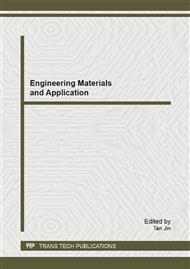p.436
p.442
p.448
p.453
p.458
p.462
p.466
p.470
p.474
Experimental Study on the Interaction between Femtosecond Laser and Energetic Materials
Abstract:
Unlike the long pulse irradiation that is described by a single temperature diffusion model, the femtosecond laser energy transport is considered two separate temperatures for electron and lattice of material, which makes femtosecond laser to be a useful tool for demilitarization, surveillance and the creation of new ordnance components. For a better use of the femtosecond laser, the interaction between femtosecond laser and energetic materials should be well studied. In this paper, the experiments of femtosecond laser radiation matchstick head are designed to be a preliminary study on the interaction between femtosecond laser and energetic materials. The ablation phenomenon is clearly observed, and the ignition time of matchstick head for 700nm, 850nm, 950nm wavelengths femtosecond laser with different power densities are obtained by a high speed camera. It is found that 700nm wavelength cost least time to ignite the matchstick, and when the laser power density increases, the difference among three wavelengths becomes smaller. When the power density is about 7500W/cm2, the lasers are all powerful enough to instantly ignite the matchstick. The results show that with the control of power density and radiation time, the femtosecond is a useful tool to incise and study energetic materials.
Info:
Periodical:
Pages:
458-461
Citation:
Online since:
January 2013
Authors:
Price:
Сopyright:
© 2013 Trans Tech Publications Ltd. All Rights Reserved
Share:
Citation:


